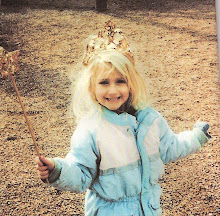... now, the rain is gone,
I can see all obstacles in my way
Gone are the dark clouds that had me blind
It’s gonna be a bright (bright), bright (bright)
Sun-Shiny day. – Johnny Nash
What is a definition? According to most dictionaries it’s a series of verbiage that makes something clear, in other words not vague or general. Reviewing the current definition of public relations (PR) mentioned in Stuart Elliot’s New York Times article, public relations “helps an organization and its publics adapt mutually to each other”. Sounds like matchmaking to me, add a fee and one may have pimping. In fact, Webster Dictionary defines a matchmaker as “a person or company that brings parties together for commercial purposes” and a pimp as “a person who solicits customers usually in return for a share of the earnings”. Sound familiar?
The Public Relations Society of America (PRSA) is looking to redefine public relations knowing that past definitions have been vague and in light of some high profile scandals of late, it needs revamping. Maybe it should be something like: I, Lucy Cox, do solemnly swear, as a public relations professional, to honor my country, my communities, and consumers, first and foremost before client and paycheck, clear enough? Or really let’s be clear, “I, Lucy Cox, do solemnly swear, as a public relations professional, to honor my family, my need to provide, increase my portion for survival in a dog-eat-dog world before client, consumer and community”. Let’s face it; it is the American dream.
The haziness of these codes has allowed all kinds of behavior to sneak by. According to the Corbett article, Time for Resolutions; Will you Commit to PR Ethics in 2012?, the PRSA has waged war against PR firms representing dictators who suppress their people. But there still is no code addressing this practice and if there was would the New York Times have stopped their advertorial for the Sudan as described in Case 3-1 in our textbook? The Sudan insert netted the NYT 1 million dollars. What is clear is the indefinite codes that are out there need to be clearer or stop fooling us with a sense of ethics when it is not there. Checking the New York Times code of ethics for advertising, it is important to know that “ Staff members may not use Times stationery, business cards, forms or other materials for any purpose except the business of the newspaper” http://www.nytco.com/pdf/NYT_Ethical_Journalism_0904.pdf0 Now that is clear.
Another problem is codes of conduct are just suggestions – there is no real consequence, so one gets thrown out of a professional society, big deal. According to Elliot only 10% of PR professionals belong to a society anyway. Case study 4-D in our text says that “some maintain that ethics codes are nothing more than generalized aspirations – too vague to be of any use when specific decisions must be made. “ (Page 113) Let’s look at Chapstick’s faux pa on Facebook. After posting an advertisement depicting of a women leaning over a couch with her butt in the air looking for her chapstick, facebookers started to write negative responses to the ad. Chapstick removed the comments inciting even more criticism. According to an article written by Michael Sebastian, Caught in PR Firestorm, Chapstick Issues an Apology, when Chapstick finally addressed the public they artfully fell behind another code of conduct, Facebook’s. Chapstick is quoted as saying, “we apologize that fans have felt like their posts are being deleted and while we never intend to pull anyone’s comments off our wall, we do comply with Facebook guidelines and remove posts that use foul language, have repetitive messaging, those that are considered spam-like (multiple posts from a person within a short period of time) and are menacing to fans and employees.” http://www.prdaily.com/ Brilliant, layers of codes to hide behind, raises another problem, multiple codes and conflicting codes.
Regardless of the rationalization, deleting negative comments on Facebook about one’s product by the producers of the product is not that unethical. Consider the issue of community, are we in the business of telling half-truths to our consumers. Chapstick may argue, what is the harm? The old lies of omission philosophy, what is the harm? Consumers are being misled when is that not harm?
Corbett notes that PRSA and the FTC are monitoring various public relations practices but look more clearly, the issues being addressed have nothing to do with false advertising, misleading and half-truths. The issues are whether or not interns should be paid. An initiative established by Rosanna Fiske, chairwomen and chief executive of PRSA was established this past year to redefine the definition of PR. The exercise according to the website, http://www.prdefinition.prsa.org/, has narrowed it down to 3 definitions to consider for PR: 1) public relations is the management function of researching, engaging, communicating, and collaborating with stakeholders in an ethical manner to build mutually beneficial relationships and achieve results, 2) public relations is a strategic communication process that develops and maintains mutually beneficial relationships between organizations and their key publics, and 3) public relations is the engagement between organizations and individuals to achieve mutual understanding and realize strategic goals.
Clearly, profits aka ‘mutual understanding”, mutually beneficial” are still the foundation of these proposed definitions. Only definition number 1 is clear that the relationship between a PR professional and all involved should be in an ethical arena, 1/3 better odds than we have seen in the past.
Bespoke salvia
9 years ago
